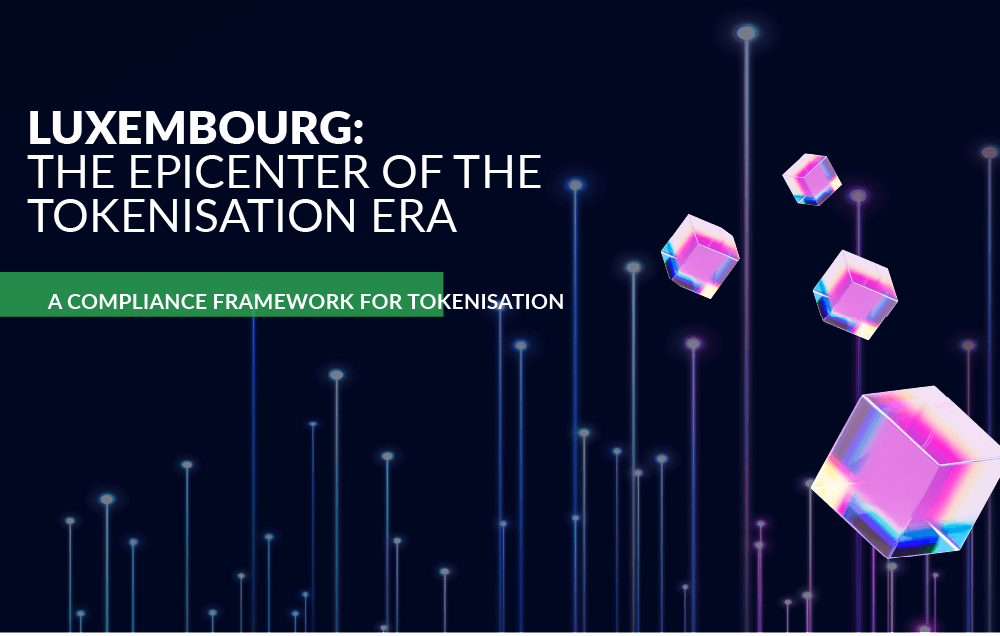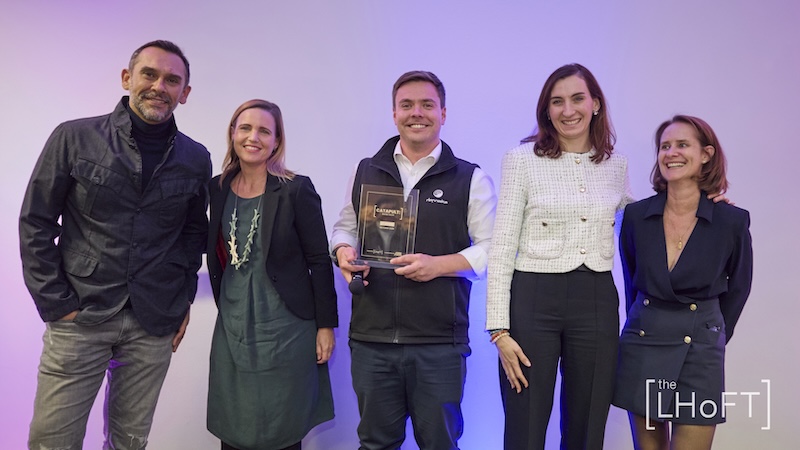Executive Summary:
Luxembourg’s financial sector is poised for groundbreaking transformation with Distributed Ledger Technology (DLT).
Blockchain’s transparent and instant transactions revolutionize securities ecosystem. Success relies on strategic planning, education, collaboration, and operational standards.
A remarkable transformation is underway in the bustling financial sector of Luxembourg. Through Distributed Ledger Technology (DLT), the Grand Duchy is poised to become a hot spot for digital securities.
We are talking of a landscape where transactions are instantaneous, ownership changes are recorded in real-time, and intermediaries’ roles are evolving. This reality is being shaped by the application of DLT and blockchain technology.
Blockchain’s immutable nature acts as an efficient protector against data manipulation and fraud, ensuring a comprehensive audit trail where transparency and trust rule. All parties involved have access to accurate information at all times.
However, we cannot mention blockchain without bringing up tokenisation and smart contracts. This dynamic duo for investment funds enables them to manage investor registers with accurate fluidity. How can we not talk about the benefits? Enhanced efficiency, security, and compliance with the existing digital securities framework are just the icing on the cake.
What about on-chain identities?
Imagine being a stakeholder whose identity is cloaked in cryptographic keys and smart contracts. The privacy, security, and control that come with this outfit are unparalleled – and all of this without the involvement of a third party.
This story has other intriguing chapters: security tokens are built on smart contracts and investor rules. They form a robust framework that can be issued as permissioned tokens and ensure compliance and security. Atomic swaps are another protagonist that facilitates the simultaneous exchange of security tokens and payment tokens, solving counterparty risks. Along with standardised protocols, they ensure seamless interaction and legal compliance.
Despite coming third here, interoperability plays a critical role in harmonising multiple blockchains. This is enabled by cross-chain bridges, atomic swaps, interoperability protocols, sidechains, and layer 2 solutions. Not to forget, the interplay with legacy systems is vital for realising blockchain technology’s full potential, through middleware and API gateways.
Developers make use of smart contract composability to combine various smart contracts, fostering innovation and growth for interconnected blockchain ecosystems.
Luxembourg Legal Landscape
Securities can be fashioned in three forms: bearer, dematerialised, or registered. While bearer securities are represented by physical certificates, dematerialised and registered securities are where DLT comes into play – with a pathway clarified by the Luxembourg Blockchain Laws.
Governed by the Companies Act, DLT’s application to registered securities promises a more efficient and transparent system for issuers and investors. Think of it as an open ledger, where transactions are as clear as day.
What’s more intriguing is the realm of equity and debt securities. Thanks to the DLT Pilot Regime, any security qualifying as a “financial instrument” can be issued, recorded, transferred, and stored via DLT, opening vast opportunities for innovation.
So, is blockchain the new frontier? While the technology offers promises of enhanced efficiency and security, there are hurdles to be overcome and opportunities to be seized. So, what are the challenges and prospects of blockchain adoption in Luxembourg’s financial sector?

Blockchain Adoption:
Challenges
- Strategic Allocation of Capital: blockchain is altering the financial arena by facilitating peer-to-peer transactions. In this case, intermediaries must evolve.. Or potentially face extinction. However, this evolution is not just about survival – it’s also about tapping into a renewed potential for collaboration and value creation in the financial sector.
- Limited Mass Adoption: a significant challenge is the pre-existing heavy investment in legacy systems and the complexity of integrating blockchain. Moreover, international organizations face a labyrinth of national regulations, which, coupled with the absence of cash-on-ledger solutions, such as a digital euro for Delivery versus Payment (DvP) transactions, further complicates adoption.
- Absence of Urgency: It is commonly admitted that current processes are sufficient and that adopting blockchain is akin to venturing into uncharted waters. Skepticism abounds due to limited successful implementations and concerns about disintermediation.
- Preference for Private Blockchains: many financial institutions desire control over their financial data, which leads to a preference for private blockchains. However, this comes at the cost of scalability and access to new asset classes and publicly available infrastructure.
Opportunities
- Reinvention of intermediaries: blockchain is not just a disruptor but an enabler. It opens doors for intermediaries to offer new value-added services and collaborations.
- Educational initiatives: the current knowledge gap needs to be bridged. Adoption of DLT can be facilitated by educating market participants about blockchain’s potential.
- Innovation in transaction mechanisms: think of alternative transaction mechanisms, such as conditional DvP and energy-efficient consensus mechanisms like Proof-of-Stake (PoS).
- Proliferation of Public Blockchain Platforms: as public blockchain platforms and protocols gain traction, the focus should be on interoperability, longevity, mass adoption, customization capabilities, and security to enable informed investment decisions.
- Cash-on-Chain solutions: Central Bank Digital Currencies (CBDCs) are critical for transactions that rely on traditional central bank money settlement. This bridges the gap between digital assets and fiat currencies.
- Operational advantages: DLT offers myriad operational advantages including improved efficiency and transparency of securities issuance and transfer processes, and the empowering of end-users by giving them control over their data and transactions.
- Financial sector evolution: With DLT, the financial sector can move from traditional third parties maintaining registers, to a more transparent, efficient, and cost-effective system. Luxembourg’s supervisory authority, the CSSF, recognizes this potential and is allowing administrators to use DLT for maintaining registers.
- On-chain/off-chain optimisation: creating an optimal system design for better incorporation instead of retrofitting the existing system, coupled with asset tokenization, caters to a new generation of investors.
- Global asset management market: Luxembourg, with $962 billion in AUM in regulated alternative funds, is well-positioned for asset tokenization. This encompasses equities, fixed-income markets, real estate funds, and private equity.
Sustainable data integration: aligning with DLT and asset tokenization can lead to the integration of a wide range of data into transactions, including ESG factors, which results in enhanced transparency, reliability, and customizable investment opportunities. - Sustainability and digital pioneering: Luxembourg can become a trailblazer by incentivizing and supporting a national initiative to tackle initial challenges and ambiguities. With the right mix of funding programs, regulatory support, and research collaborations, the nation could set the stage for the next financial revolution.
- Knowledge sharing: engaging industry stakeholders, regulators, academia, and technology providers in knowledge exchange can create a fertile ground for best practices and technical expertise sharing. This collaborative ecosystem can unlock unforeseen potentials and position Luxembourg as a leader in blockchain innovation.

Now, let’s turn our lens to the future of securities registers. The advent of blockchain technology is ushering in new issuance models, which are reshaping the roles of market participants.
Public infrastructure benefits, such as innovation and access to new asset classes are burgeoning. Public DLT facilitates near real-time reconciliation between entities, but for this to thrive, multilateral approaches with universally accepted operational standards are imperative.
So, what does this mean for Luxembourg?
There is a dire need for strategic thinking, robust educational initiatives, and collaborations. It’s about recognising that this is not just a technology transformation, but a deep, layered metamorphosis of the financial ecosystem.
Luxembourg is at a crossroads, with the opportunity to lead to unprecedented innovation, efficiency, and a dynamic financial sector buoyed by blockchain.
As is the new rule in this digital age, the keys to success lie in striking a balance between innovation and sustainability, cultivating knowledge and collaboration, and embracing the transformative power of blockchain.
In the words of Victor Hugo, “There is nothing like a dream to create the future.” In this endeavor, Luxembourg has the potential to not only adapt to this digital landscape but to shape it.

For more information download our White Paper






